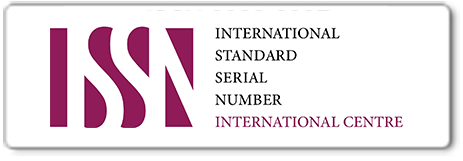The Effect of Personal Selling, Premium Prices, and Income Levels on Interest in Buying Insurance Products in (Case Study on Millennial Generation and Gen-Z in Medan City)
DOI:
https://doi.org/10.59086/ijest.v2i3.322Keywords:
Personal Selling, Premium Prices, Income Levels, Interest in BuyingAbstract
References
Abdullah dan Tantri. 2015. Manajemen Pemasaran. Jakarta: PT Raja Grafindo Persada
Amrin, A. (2016). Data Mining Dengan Regresi Linier Berganda Untuk Peramalan Tingkat Inflasi. Jurnal Techno Nusa Mandiri, XIII(1), 74–79. Retrieved from
http://ejournal.nusamandiri.ac.id/ejurnal/index.php/techno/article/view/268
Assauri Sofjan. 2014. Manajemen Pemasaran. Raja Grafindo Persada: Jakarta.
Ferdinand, Augusty. (2014). Metode Penelitian Manajemen, Semarang, Badan Penerbit Universitas Diponegoro
Ghozali, I. & Latan, H. (2015) Partial Least Squares: Konsep, Teknik dan Aplikasi Menggunakan Program SmartPLS 3.0. Semarang: Badan Penerbit Universitas Diponegoro.
Harnanto, Drs.M. Soc.Sc.2019. Dasar - Dasar Akuntansi.Yogyakarta
Kotler dan Armstrong. (2014). Manajemen Pemasaran. Edisi 15. Jilid 1. Jakarta: Erlangga. Kotler, P., & Keller, K. L. (2016). Manajemen Pemasaran. Jakarta: Erlangga
Novrian Dandi Pratama, Ahim Abdurahim, Dan Hafiez Sofyani. 2018. “Determinan Efektivitas Implementasi Anggaran Berbasis Kinerja Dan Penyerapan.” Jurnal Reviu Akuntansi Dan Keuangan Vol 8 No 1
Satiti, Pilar. 2014. Jurnal Publikasi. Pengaruh Pendapatan dan Peran dan Aparat Kelurahan Terhadap Kesadaran Masyarakat dalam Membayar Pajak Bumi dan Bangunan di Semanggi: Surakarta.
Sinaga, C. E., Sibarani, H. J., & Nababan, S. jumiyanti. (2022). Pengaruh Persepsi, Minat Beli dan Kepercayaan Terhadap Pembelian Produk Finansial pada Aplikasi Pinjaman Online di Kota Medan. Management Studies and Entrepreneurship Journal (MSEJ), 3(3), 1273–1284. https://doi.org/10.37385/msej.v3i3.572
Sugiyono. (2017). Metode Penelitian Kuantitatif, Kualitatif, dan R&D. Bandung : Alfabeta, CV
Downloads
Published
How to Cite
Issue
Section
License
Copyright (c) 2023 Belsasar Pakpahan, Hendra Jonathan Sibarani, Brema Sembiring, Jastin Yehezkiel Batubara, Sari Mariahma Nova Sipayung

This work is licensed under a Creative Commons Attribution 4.0 International License.
International Journal Of Economics Social And Technology under the terms of a Creative Commons Attribution 4.0 International License / CC BY 4.0 This license permits anyone to copy and redistribute this material in any form or format, compose, modify, and make derivative works of this material for any purpose, including commercial purposes, so long as they include credit to the Author of the original work.
Most read articles by the same author(s)
- Alfonco Frans Cristofer, Renata Gitara Pandia, Restika Rindorindo, Hendra Jonathan Sibarani, Owen de Pinto Simanjuntak, The Effect of Digitalization, Advertising Attractiveness and Product Variety on Community Purchasing Decisions on MSME Products in Medan City , International Journal Of Economics Social And Technology (IJEST): Vol. 2 No. 3 (2023): September 2023
- Andry Sevchenko Gatuso Sianturi, Hendra Jonathan Sibarani, Eka Martyna Theodora, Effectiveness Of Online Transport Services: Service Attitude, Timeliness, And Price Appropriateness On Online Transport User Decisions In Medan City , International Journal Of Economics Social And Technology (IJEST): Vol. 3 No. 1 (2024): March 2024
- Arif Sanjaya, Yurika Yurika, Hendra Jonathan Sibarani, Sari Mariahma Nova Sipayung, Analysis of the Impact of Digitalisation of Devices, Digitalisation of Platforms and Digitalisation of Media on Perceptions of Online Shopping among Millennials and Gen-Z in Medan City , International Journal Of Economics Social And Technology (IJEST): Vol. 3 No. 1 (2024): March 2024


















